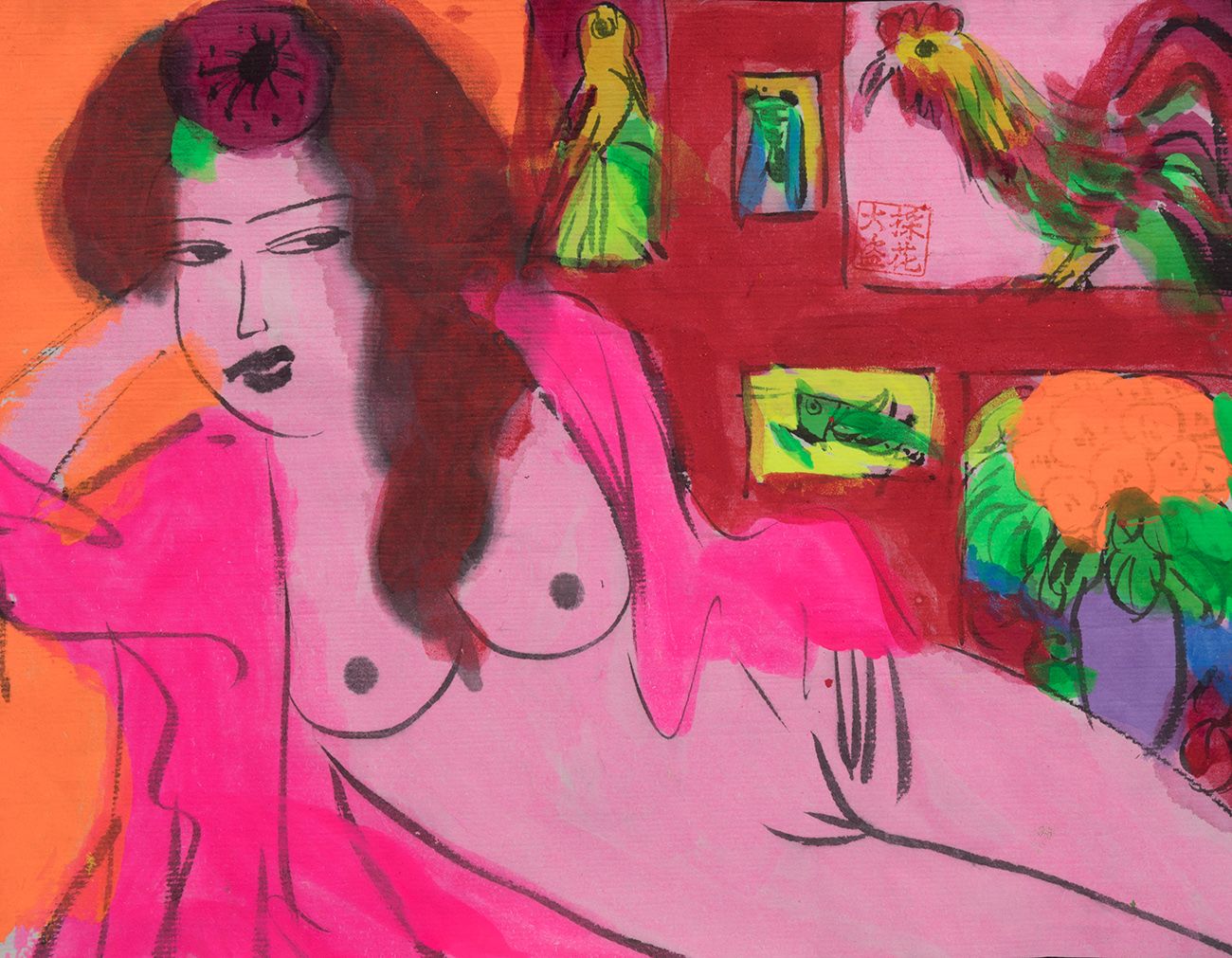Description
WALASSE TING (Shanghai, China, 1929 - New York, USA, 2010). "Jeanne". Watercolour on paper. Signed. With label on the back. Size: 19,5 x 24 cm; 36,5 x 42 cm (frame). In this watercolour, Ting combines a colourist language, characterised by the dialogue between the line and the colour stain, with a naturalistic vision that alludes to the Chinese pictorial tradition, avoiding the spatial representation typical of the European stylistic patterns. The line of the representation shows a line of an expressive and meditated character, based on different aspects and shades based on traditional Chinese ink painting. However, the treatment of colour through large fields composes a personal, erotic and contemporary image. Chinese artist and poet Ting studied briefly at the Shanghai Art Academy before leaving China in 1946 to move to Hong Kong, where he exhibited some of his watercolours in a local bookshop. In 1950, he travelled to France and eventually arrived in Paris without money, friends or accommodation. He lived as a bohemian artist for six years, absorbing the artistic styles of the city and exhibiting for the first time pieces in which he introduced features of Western art, based especially on the Expressionist movement and the works of Picasso. In 1958 Ting arrived in New York, coinciding with the beginning of a peak period for the Abstract Expressionist movement. Unlike in Paris, his work achieved remarkable artistic recognition. His paintings at that time were mainly poetic abstractions influenced by the aesthetic patterns of traditional Chinese artists. It was from the 1970s onwards that Ting developed his most distinctive style using Chinese calligraphic brushstrokes to define contours and fill in flat areas of colour with brightly coloured acrylic paint. After more than 20 years in New York, Ting moved to Amsterdam, where he owned a large studio, where he worked until 2002, when he suffered a serious illness that retired him from the art world, and in 1970 he was awarded the Guggenheim Prize for his drawings. Today his works are represented in important art centres such as the Tate Gallery in London, the Metropolitan Museum and the Guggenheim in New York, the Centre Pompidou in Paris, the Hong Kong Museum of Art and other collections around the world.
10
WALASSE TING (Shanghai, China, 1929 - New York, USA, 2010). "Jeanne". Watercolour on paper. Signed. With label on the back. Size: 19,5 x 24 cm; 36,5 x 42 cm (frame). In this watercolour, Ting combines a colourist language, characterised by the dialogue between the line and the colour stain, with a naturalistic vision that alludes to the Chinese pictorial tradition, avoiding the spatial representation typical of the European stylistic patterns. The line of the representation shows a line of an expressive and meditated character, based on different aspects and shades based on traditional Chinese ink painting. However, the treatment of colour through large fields composes a personal, erotic and contemporary image. Chinese artist and poet Ting studied briefly at the Shanghai Art Academy before leaving China in 1946 to move to Hong Kong, where he exhibited some of his watercolours in a local bookshop. In 1950, he travelled to France and eventually arrived in Paris without money, friends or accommodation. He lived as a bohemian artist for six years, absorbing the artistic styles of the city and exhibiting for the first time pieces in which he introduced features of Western art, based especially on the Expressionist movement and the works of Picasso. In 1958 Ting arrived in New York, coinciding with the beginning of a peak period for the Abstract Expressionist movement. Unlike in Paris, his work achieved remarkable artistic recognition. His paintings at that time were mainly poetic abstractions influenced by the aesthetic patterns of traditional Chinese artists. It was from the 1970s onwards that Ting developed his most distinctive style using Chinese calligraphic brushstrokes to define contours and fill in flat areas of colour with brightly coloured acrylic paint. After more than 20 years in New York, Ting moved to Amsterdam, where he owned a large studio, where he worked until 2002, when he suffered a serious illness that retired him from the art world, and in 1970 he was awarded the Guggenheim Prize for his drawings. Today his works are represented in important art centres such as the Tate Gallery in London, the Metropolitan Museum and the Guggenheim in New York, the Centre Pompidou in Paris, the Hong Kong Museum of Art and other collections around the world.
